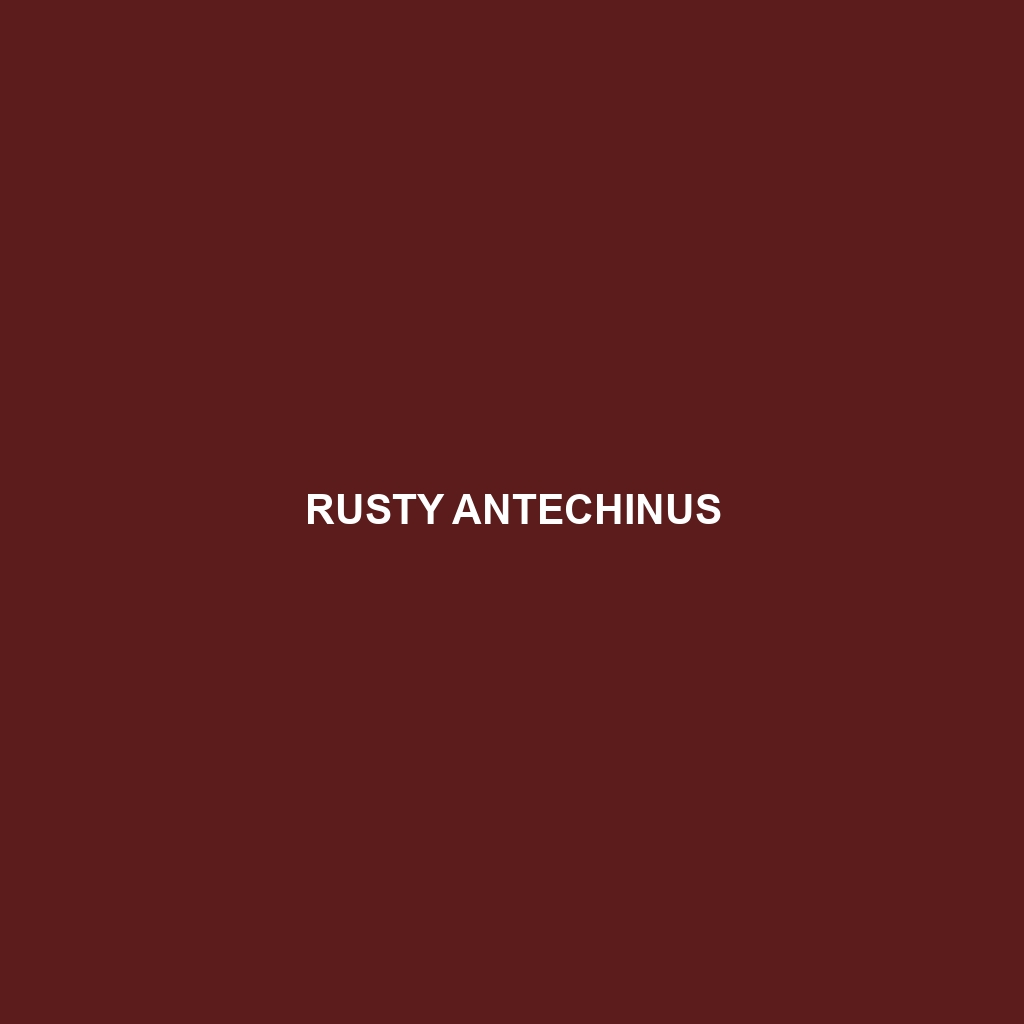Rusty Antechinus (Antechinus adustus)
The Rusty Antechinus (Antechinus adustus) is a small, carnivorous marsupial endemic to Australia. It is known for its distinctive rusty-brown fur, frenetic lifestyle, and fascinating reproductive behaviors. This elusive mammal is part of the Dasyuridae family and primarily inhabits the rainforests and wet sclerophyll forests of Queensland.
Physical Characteristics
Size:
The Rusty Antechinus is a small mammal, typically measuring between 10 to 14 cm (4 to 5.5 inches) in body length, with a tail that adds an additional 9 to 12 cm (3.5 to 4.7 inches). Males are generally larger than females.
Coloration:
True to its name, the Rusty Antechinus sports a coat of rusty-brown fur. The underside is generally lighter, often a cream or pale brown, providing effective camouflage in its natural habitat.
Special Features:
Tail: The tail is almost as long as its body and is prehensile, helping the antechinus balance and maneuver through dense vegetation.
Teeth: Equipped with sharp, pointed teeth suited for its carnivorous diet.
Pouch: Females have a pouch for rearing their young, which is typical of marsupials.
Behaviors
Social Interactions:
Rusty Antechinuses are generally solitary creatures, coming together only during the breeding season. Males are especially competitive and often aggressive during this period.
Feeding Habits:
This species is primarily insectivorous, feeding on a diet that includes insects, spiders, and small vertebrates. They are nocturnal hunters, using their keen senses to locate prey in the dark forest underbrush.
Reproductive Behavior:
One of the most fascinating aspects of the Rusty Antechinus is its breeding behavior. Mating season is incredibly intense, lasting about two weeks. During this time, males engage in frantic and often fatal mating marathons, after which most of them die from stress and exhaustion. Females give birth to tiny, underdeveloped young that continue to develop in the mother’s pouch.
Habitats
Natural Habitat:
The Rusty Antechinus primarily resides in the rainforests and wet sclerophyll forests in Queensland, Australia. They prefer dense, moist environments rich in leaf litter and undergrowth, which offer ample food sources and shelter.
Adaptations:
Climbing Ability: Their prehensile tails and sharp claws make them excellent climbers, adept at navigating through the complex forest canopy.
Nocturnal Lifestyle: Being active at night helps them avoid many predators and take advantage of nocturnal prey.
Conservation Status
Threats:
The primary threats to the Rusty Antechinus include habitat destruction due to logging and land clearing, as well as predation by introduced species such as cats and foxes.
Conservation Efforts:
While the Rusty Antechinus is currently not listed as endangered, conservation efforts focus on habitat preservation and controlling invasive species to ensure their populations remain stable.
Fun Facts
Short Lifespan: The lifespan of a Rusty Antechinus is notably short, with males typically living less than a year due to their intense reproductive activities.
Energy Bursts: Despite their small size, these marsupials exhibit remarkable bursts of energy, capable of rapid and agile movements as they hunt and evade predators.
Unique Reproduction: The Rusty Antechinus is one of the few mammals known for semelparity, where males die shortly after a single, intense breeding season.
The Rusty Antechinus is a remarkable example of nature’s diversity, exhibiting unique behaviors and adaptations that make it a fascinating subject for study and conservation.
